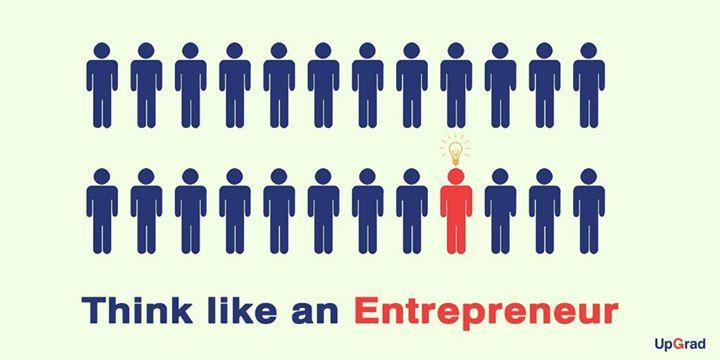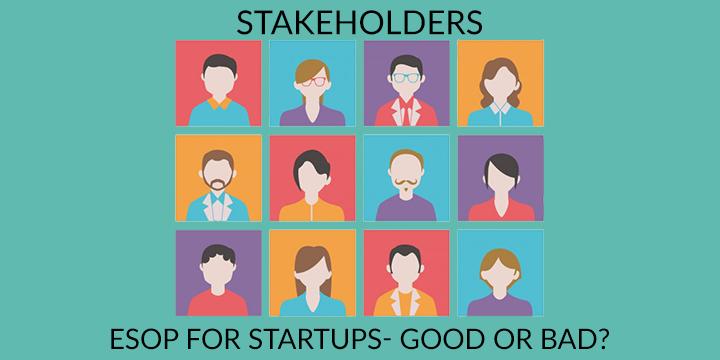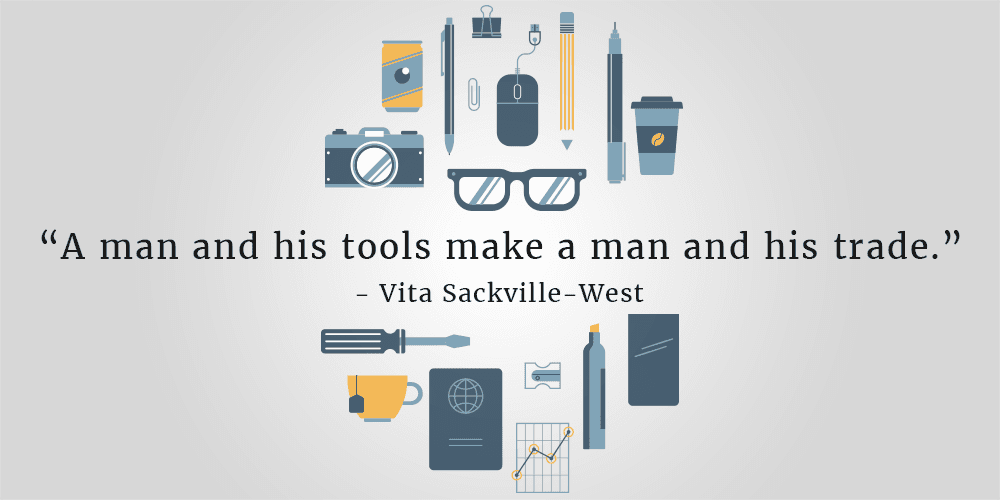In the first and previous blog of this series, “Marketing ROI: Is it just a number?”, the discussion revolved around defining Marketing ROI. Recapping summarily, arriving at Marketing ROI requires the forethought of defining and understanding business and consumer objectives, with the support of data and insights, from which marketing objectives are clarified and strategies developed, before measures can be determined.
The capability to digitise marketing has since given rise to being able to drive consumer response to advertising into the Sales funnel directly. This has made generating traffic and leads digitally one of the most critical objectives of digital marketing. This is especially in a market environment that has long needed a reprieve from the continually rising costs of the Sales function that has relied largely on physical resources and which has faced tough challenges under intense competition, intensifying consumer expectations, and escalating costs of human resource and premise rentals to say the least.
Traffic and leads generation has thus become an accountability of the Marketing function, which, however, is also a double-edged sword for marketers:
-
- Being able to generate and measure quantifiable contribution to the business lends the Marketing function significant credence to its value.
- As a marketing accountability and performance indicator, without the end-t0-end full-funnel management and control, efforts can however be and likely often are hampered by many dependencies and variants.
The ability to generate traffic and leads is, however, not an indicator of business success, yet. That is, until and unless successful conversion to sales, in alignment with business objectives, has been established. So, whilst generating volumes of traffic and leads may demonstrate (a certain level of) marketing success, where does or should the accountability end for marketers? And are marketers to be held accountable for the effectiveness of traffic and leads converting successfully into sales?
But at this point, some may ask: why is the accountability of marketers relevant in the context of this discussion, when there is a much greater challenge over HOW to generate (more) traffic and leads?
If marketers are not accounting for their accountability appropriately, then the quality of traffic and leads that they generate will not matter, so long as there is quantity. And this brings us back to “Marketing ROI: Is it just a number?”: and in this case, yes it is indeed just a number, and it could possibly be a meaningless one if all we care about is just quantity.
And if the quality is not important, then it implies that getting anyone and everyone to respond to an ad is sufficient. But the question remains: will “anyone and everyone” CONVERT? And what is the cost of sifting through voluminous leads to get to a satisfactory end point?
How to Initiate a Word Of Mouth Marketing Movement
Learn Best MBA Courses from the World’s top Universities. Earn Masters, Executive PGP, or Advanced Certificate Programs to fast-track your career.
Quality over Quantity: Why Settle for Just One?
Firstly, resources are obviously far from being unlimited, and aiming for both quantity AND quality is an extremely expensive undertaking in the digital advertising world. (Note: The reference here is made to the execution of single campaigns and not to long-term strategies in acquiring volume that may span over a period of several years for instance).
Secondly, big numbers may be impressive, but going for “quantity” is virtually a hunt for a needle in a haystack. Whilst there is no specifically definitive answer to what the Sales closure or conversion rate is (as different products, companies and industries experience different rates alongside different scenarios and computation methodologies), the point remains that the exercise of identifying qualified leads from a high volume of leads, and following up on those leads, not only completely defeats the programmatic targeting value of digital marketing, but is a highly time-consuming and expensive waste of resources.

Before moving on, let’s qualify what has been discussed above: the point being made is not against attempting to generate large volumes of traffic and leads. Rather it is pointing out that it can be a futile effort when the objective is not realistic and even possibly self-defeating when quality is not the key focus (with dependencies and factors taken into consideration).
What You Measure is What You want to Acquire
If you have a good idea of what you are being measured on, that is, your Marketing ROI, you have taken the right 1st step towards being able to generate quality leads.
Each time you run a campaign, you will get a set of responses which becomes the basis
-
- of sharpening your future measures.
- from which you sharpen your strategy, and hence your effectiveness, in improving traffic and leads responses and returns.
Don’t Call Me, I’ll Call You
The best leads are usually the ones where the consumer proactively, and actively, seeks you out. That behaviour is indicative of a pre-existing interest, want or need. That much is obvious.
The challenge lies in why, where and how the customer will seek you, specifically, out. And why they would choose you?
What’s your Name? What’s your Number? What’s your Game?
Historically, the Sales function, and even the organisations at large, has had little to do with branding as we know it today, with little to no understanding of its value and potential. Many organisations understood the presence of their brand as simply a representation by their logo, with little attention paid to the innate value of building brand equity as a long-term corporate strategy.
In fact, the relationship between Sales and Brand was so far removed that Sales was long perceived as the backbone and driving force of an organisation in seeking revenues, and hence as what defines the value and worth of the organisations. Brand, on the other hand, has been perceived as a fluffy ideology whose existence is merely acknowledged as being aesthetically based with little tangibility, and little to contribute in hard monetary value.
In the recent 10 years or so, Branding has been taken much more seriously by more organisations, where it has now become recognised as a critical measure of organisations value – because Brand Equity is the Measure of the Organisation’s Value to its Customer.
As such, how can we generate any traffic and leads, much less quantity and with quality, when the customer does not
-
- know you exist? Are you visible?
-
- recognise you? Are you distinct and distinctive?
-
- understand you? Is your value clear, and do you communicate it well?
-
- feel attracted to you? Are you appropriately & aesthetically well presented and packaged?
-
- connect with you? Are you available, and accessible?
-
- desire to engage with you? Are you interesting, and genuine?
- take that final step to convert? Are you the most relevant, and valuable?
In other words, what is your Brand Equity? And what further equity are you building with the Customer Journey & Experience you have in place? Do you have the above points in place to effectively Attract, Connect, Engage AND Convert a consumer?
But Brand Equity, like the roads of Rome, is not built overnight. It requires a clear organisation mission and a long-term strategy, with sustainability through many aspects of an organisation’s actions and activities, and with a substantial contribution from marketing efforts (upcoming blogs will address Brand Equity in greater depth).
The Consumer Journey & Experience: Is it the Road to your Success?
It cannot be over-emphasized that the consumer journey and experience has a lot more to do with failure to achieve traffic and leads than probably realised or addressed. And this is not exclusive to marketing digitally: the consumer journey & experience has existed since the first seller-buyer transaction took place, and it has always been a critical decisive factor in the success or failure of businesses. The digitalisation of the process has just made this factor a lot more obvious.
And whilst the consumer journey is by no means a simple straight line, very often businesses complicate this further, to their own detriment, with unnecessary complexities in the engagement of the consumer through the line.
To illustrate the journey in simple(r) terms, we segregate the consumer journey into 3 key milestones:
-
- 1st touchpoint
-
- Product evaluation
- Purchase closure (or Abandonment)
And this is a checklist for the Consumer Experience throughout that journey:
-
- Communication: clear, consistent & succinct?
-
- Value proposition: transparent & appealing?
-
- Incentives: value-add & valued?
-
- Reputation: positive & lauded?
-
- Accessibility: available & convenient?
-
- Aesthetics: appealing & value-add?
-
- Process: fast & seamless?
-
- Fulfilment: easy & timely?
-
- Service: knowledgeable & helpful?
- Product or service: received to, or even beyond, expectations?
At every of the above key milestones, it is only natural that organic drop-offs will occur. However, it is also possible that as much as 80% or more traffic drops off after stage 1.
Even if your focus is on marketing digitally, be aware that consumers can get to the 1st Touchpoint through a multitude of channels that include physical sources. Whilst it may be impossible for the marketer to control and manage every single channel for various reasons, there are some key actions that can be taken to maximise what you can control and manage, where Consistency and Clarity across all media and channels is one of the key factors.
Win your Organic Reach back – Beat Facebook’s Algorithm Changes
Don’t put your Consumer on a Carousel
Marketers now have access to a growing range of physical and digital platforms with which to present their wares, including physical and digital Paid, Owned and Earned media and channels.
The growth of these resources is, however, accompanied by the complexity of omnichannel management. Omni-channel strategy and management from a marketing and brand perspective will be addressed in detail in future blogs, but in summary here, it needs to be emphasized that (over and above the sales process, operations, fulfilment and other related processes) for the Marketer:
- Media and creative mix strategy is critical, upon which a content strategy is imperative.
Note: content referred to here includes all communication content across paid, owned and earned media and channels as a catchall.
With extensive media and channels at the marketer’s disposal, it is only too easy to end up with a convoluted maze-like journey of inconsistency and lack of clarity that frustrates the consumer. Before the consumer gets to the conversion point, take a look at what the number of:
-
- channels the consumer may need to go through
-
- clicks the consumer has to make
- distractions that the consumer encounters
It is already a difficult if not impossible task to state unequivocally that a consumer journey will take a certain route: for instance, will a consumer who sees an ad on a digital device actually click on it, peruse the offer and from there make a decision? The reality of a consumer journey is usually much more convoluted and unpredictable than that.
And the reality of a probable consumer journey could be as follows:
-
- see a digital ad but may not click
-
- search for more information on forums, social sites, etc.
- get distracted and do something else
What went wrong here?
OR
-
- see a digital ad
-
- calls someone for information
-
- goes to a physical shop to view product
-
- goes home makes online comparisons
- and ends up buying another brand’s product
And you were abandoned: so what went wrong here?
Many things can, and they often do, go wrong for businesses amidst the Consumer Journey. So don’t make your task more difficult by developing a Consumer Journey and Experience that is further self-defeating.
The above sets the foundation for supporting the generation of traffic and leads more effectively, following which addresses the next stage: media and creative execution.
Why Digital Marketing is a Must Know for all Professionals?
Media & Creative: Target, Test & Measure, and Repeat, and Repeat…
It is imperative that marketers are clear about the objective of each media that they adopt in order to optimise the value of each, and getting a greater return than the sum of parts with the overall media mix. And it goes without saying that regardless of whether it is Search or Content or Programmatic or Creative, AB testing and comparative measurement on a regular basis are must-dos across media and channels.

There are many different media and channels, segregated into Paid, Owned, Customer-owned and Earned, further segregated by Creative applications, and which can then be combined to suit different objectives. The following is not necessarily exhaustive but addresses some key points around media and creative execution. Summarily, it needs to be highlighted that it is neither always necessary, nor in reality, sensible, to attempt covering every single media or channel.
SEM and SEO
-
- go hand in hand
-
- must be “Always-On”
-
- search loves (relevant) content
- content needs a link strategy
Programmatic Advertising
-
- don’t force-feed your media into creative formats
-
- be clear who your core target profiles are: it’s never everyone
- don’t try to target every segment on every media, each media has its own unique strength
Re-Marketing
-
- follow through, but don’t stalk
-
- if you fail twice with the same target, it’s probably better to move on
- don’t force the same creative or message repeatedly, it is self-defeating
Email and Text
-
- utilise these excellent and powerful communication vehicles judiciously and sparingly, more is definitely not better.
- segment smartly: you may not be always knocking on the correct door, and you may not always be welcome.
Maximise Owned Channels
-
- Spring clean regularly: excess or redundant content or pages and dead links on your website is akin to trash left around in a physical shop that visitors and consumers have to navigate around – they will leave and never return.
-
- Focus on what you want each page to achieve: attempting to induce the consumer with cross-selling and up-sell information and links when you have not closed the first sales could result in completely no sale.
- Building SEO: it’s tempting to overkill with content: relevance in content, simplicity in language,
clarity in communication remains the key.
Differentiating Media Purpose
-
- just as you won’t be welcome selling products at a social setting in the physical world, the same goes in the digital world.
- some media and channels are better for just building brands and reputation.
Content Strategy
-
- utilise and maximise social, owned and earned media
-
- assign different purposes between paid and free media with differentiated content
-
- develop relationships between factual and emotional content across media
- content does not always mean hard-selling or promoting your product, it is more
valuable if it is a value-add resource that for instance demonstrates, shares or supports information that showcases the organisation’s expertise and the values that it upholds
Creative Communication
-
- don’t force-feed your creative into media formats
-
- don’t make speeches, tell (short) stories
-
- don’t state facts, connect with emotions
-
- don’t hold a monologue, encourage interaction
- don’t jump on media platform or creative trend bandwagons, what suits one product may not be appropriate for yours
Launching Campaigns with Strategy
-
- Don’t jump into peak periods unless you are the leader or a key competitor
-
- Even then, find your key strength and create your own niche
-
- Don’t pitch your product against the competitive key strength unless you can win, you may be better off working against your competitor’s weakness
- But the bottom line still remains: don’t be very good at something very irrelevant
Performance Measurement & Reports
It is tempting to check responses and results obsessively when a campaign is launched. However, it is probably more productive to have a standard report that is reviewed on a fixed periodic basis – unless something has gone superbly well, or horribly wrong, and needs immediate attention.
A performance report template should be kept simple, and include the performance of each media and each set of creative for a pre-decided period segment (weekly for instance), and summed up at the end of the campaign. This set of results is then tagged onto your owned channel if that is where consumers are clicking through, and finally onto the Sales conversion funnel.
Media & Creative Performance
-
- Set Targets
-
- Budget assigned
-
- Number of Clicks
-
- CPL / CPM
-
- CPA
-
- Search keyword comparative performance
-
- Creative comparative performance
-
- Cost- efficiency and media comparative performance
- To-date Achievement vs Total Target
Owned Channel Performance
-
- Consumer pathway evaluation
- Track drop-off points and quantum for evaluation leading to fixes where needed
Sales Funnel Performance
-
- Number of conversions
-
- CPA
-
- Possible spillover cross/up-sell
- Sales performance comparison across the various Sales pipelines
What is just as important as measuring performance is to also use these results to analyse the gaps which almost always can equate opportunities when addressed appropriately.
Is Free Less Valuable?
On a closing point, there are businesses that do a superb job of maximizing the value of their owned channels, be they physical or digital. Often, however, owned media doesn’t seem to get as much attention as Paid media because it is “free” and they become almost a blind spot to the business (but perhaps not to the consumer). Owned channels are, in fact, one of the most valuable resources, and sometimes one of the most expensive assets of organisations. It would be interesting to evaluate how these can be converted into generating further returns.

Email & Text: Who owns them?
And on the same subject of “free”, email and text are perceived by some marketers and businesses as owned media (because you have the addresses and phone numbers?), and “free” or “cheap” because of the sheer number of people marketers can hit, and hit in one fell swoop.
Actually, we have the wrong end of the understanding here: email and text are owned by the consumer, not businesses. Knowing someone’s address does not mean you can enter their home freely. The same as such must apply to consumer-owned email and text. But it is precisely the aforementioned attitude or belief that has had consumers inundated indiscriminately with incessant and intrusive advertising.
Marketing ROI: Is it just a Number?
Email and text when used smartly and discriminately have huge potential in moving a consumer quickly through the pipeline of Attract, Engage and Convert, and can function as powerful independent or support marketing tools.
For an in-depth understanding of these various marketing tools, and become an expert in Digital Marketing, check out upGrad & MICA’s PG Certification in Digital Marketing & Communication. Become an expert in social media marketing, content marketing, branding, marketing analysis and PR.
If you want to learn more about marketing and entrepreneurship, Liverpool Business School & upGrad offers Master of Business Administration (MBA) Liverpool Business School which helps you to transform your career. The program provides 1-on-1 mentorship from industry leaders, 1-week immersion program at University campus, dual credentials (MBA from LBS & PGPM from IMT), network with peers at offline basecamps and more.







